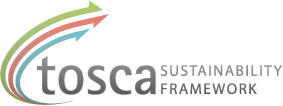Value chain activities
Navigation by keywords
Scientific state of the art on sustainability strategies for companies
Corporate environmental and sustainability strategies vary widely from one company to another. The literature on how these strategies can be classified can be useful as a source of inspiration in developing your own strategy.
There are several classifications of environmental, ecological and sustainable development strategies. One classification that Boons (2009) describe is that by Petulla (1987) which categorizes firms based on their level of compliance with governmental regulations and corporate interest in environmental affairs: 1) crisis-oriented environmental management, 2) cost-oriented environmental management and 3) enlightened environmental management. Another classification described by Boons is the one by Orsato (2006) about competitive environmental business strategy. Orsato suggests different strategic types depending on if the firm’s competitive focus and advantage is relying on cost leadership or differentiation: 1) eco-efficiency, 2) beyond compliance leadership, 3) eco-branding and 4) environmental cost leadership.
The concept of sustainable development, defined by the World Commission on Environment and Development (WCED) (1987) as “to ensure that it meets the needs of the present without compromising the ability of future generations to meet their own needs” (Brundtland, 1987, p. 8), is often used by companies but it is often interpreted in many different ways.
According to Boons (2009), one of the reasons for the many different strategies and interpretations vis-à-vis environment and sustainable development is that it is difficult to decide upon which ecological impacts that should be considered. Furthermore, differences in factors such as organizational culture, commitment from top management and specific organizational competences can partly explain why companies have different ways of dealing with their ecological impact (Boons, 2009). Rex (2008) also find that people have different understanding and interpretation of the concept life cycle thinking and that people often have difficulties to link their own work to the company environmental policy.
Hart (1995) offers yet another strategy called the natural-resource-based view of the firm which is based on three interconnected strategies: 1) pollution prevention, 2) product stewardship and 3) sustainable development. Another way of looking at strategies is to view environmental problems as just another business issue – to make environmental investments if they are likely to bring positive returns or reduce risks. This view is advocated by Reinhart (2000) who proposes five approaches on how to integrate the two aspects of environment and business: 1) differentiation products, 2) managing your competitors, 3) saving costs, 4) managing environmental risk and 5) redefining markets.
References
Boons, F. (2009). Creating Ecological Value: An Evolutionary Approach to Business Strategies and the Natural Environment (Chapter 1). Cheltenham, UK & Northampton, MA, USA: Edward Elgar.
Deephouse, D.L. (1999). To be Different or to be the Same? It’s a Question (and Theory) of Strategies Balance. Strategic Management Journal, 20(2), 147–166.
Hart, S. (1995). A Natural-Resource-Based View of the Firm. Academy of Management review, 20(4), 986-1014.
Reinhart, F. (2000). Bringing the Environment Down to Earth. In Harvard Business Review on Business and the Environment. Boston, MA, USA: Harvard Business School Press.
Rex, Emma: Marketing for Life Cycle Thinking. Göteborg: Chalmers University of Technology. Diss. (Doktorsavhandlingar vid Chalmers tekniska högskola. Ny serie; 2835) ISBN/ISSN: 978-91-7385-154-1
White, P. (2009). Building a Sustainability Strategy into the Business. Corporate Governance, 9(4), 386 – 394.

